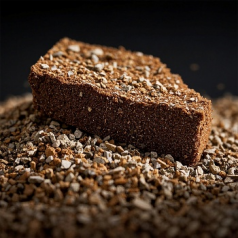In recent years, vermiculite has become increasingly popular in the construction and insulation sector due to its wide array of beneficial characteristics. This can be attributed to the fact that vermiculite is derived from expanded mica, which is a mineral that is relatively light in weight, non-combustible and exhibits properties of superb thermal insulation. To understand why environmentally conscious builders opt for vermiculite, let us delve into its role in thermal insulation alongside its advantages and applications.
Why Use Vermiculite For Thermal Insulation
Vermiculite has a reputation for being a good insulator for various reasons. One particular quality that sets it apart from other materials is its porous nature that facilitates heat retention. This can make it useful for a variety of applications, ranging from residential building insulation to agricultural, and even industrial purposes. Its ability to slow down heat transference means that it can help keep buildings warm in the cold seasons and cool during the warm seasons, which in turn boosts energy efficiency.
Benefits of Using Vermiculite in Insulation
The nature of vermiculite’s lightweight construction stands out amongst others as one of its greatest strengths this makes it very easy to transport and handle. With the application of vermiculite, there is significantly less labor involved as it needs to be poured or blown into spaces as oppose to extensively being installed like other minerals. This type of insulation material is also a fireproof material as it can withstand high temperatures. Its antifungal and pest resistant properties makes it an ideal material because of its eco friendly and long term usage elements.
Applications of Vermiculite in Construction
Vermiculite is multipurpose and hence can be used in many construction materials It is prevalent in attics, walls ,floors where it can loose-fill insulation wet bathe as well as dry bathe. It is also found in various mature composites of other materials that have been designed to meet the thermal insulation requirement of vermiculite . It is used in more than just houses as it is also incorporated into energy efficient structures used for business and industrial approaches.
Environmental Impact and Sustainability
As today's market is quite attentive towards environmentally friendly and green products, the selection of building materials with sustainability focuses becomes vital. Vermiculite is a completely natural raw material that is extracted in mining and processing and which is not harmful to the environment. Moreover, it is waste material which can be recycled and so helps in waste minimization in the construction industry. Therefore, if a verimiculite is utilized during the thermal insulating to the actual building construction, the carbon footprints of the builders will surely decrease and hence enhance the sustainability of building construction.
Industry Trends and Future Outlook
The growing emphasis on energy efficiency will lead to increased demand for the use of vermiculite for thermal insulation of buildings. Evolving in the ways of processing and applying vermiculite for various purposes makes it more relevant for today’s construction industry. Furthermore, since more builders will be able to provide green construction, it seems that the prospects of vermiculite as the insulation material will be very bright.
To summarize, particularly as it concerns building construction, it is evident that vermiculite is integral in the performance of thermal insulation as it offers unique benefits which are suitable for the current state of construction. It is lightweight, does not burn, and is environmentally friendly, therefore, it is an excellent substitute to construction items that add overall energy efficiency but is eco friendly.

